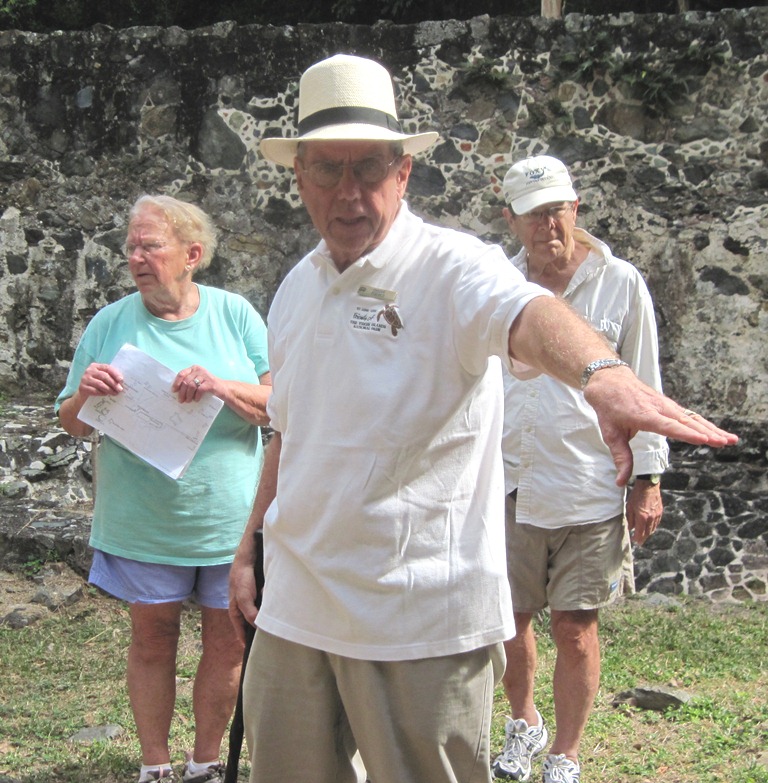
“The Danes didn’t know what they were doing,” Pishko told the more than two-dozen people on Wednesday’s Friends of V.I. National Park seminar on the history of the Cinnamon Bay area.
Elaborating, he said the Danes were fixated on using slave labor to run plantations long past the time when mechanized methods were available.
After slavery ended in 1848, the former slaves worked on contracts. Pishko said that when those contracts ended, the workers fled the island. Many went to Tortola, but large numbers also headed to New York.
People survived on St. John because the slaves had skills they shared with the European transplants.
“The slaves knew how to make burlap sacks out of palm fronds,” Pishko said.
Cinnamon Bay, now home to a campground, has a human history that started around 800 B.C., park archeologist Ken Wild told the group.
Displaying artifacts taken from various archeological digs at Cinnamon Bay, Wild talked about the changing cultures. The Taino Indians were the earliest known residents at Cinnamon Bay, but the earliest European artifacts date to 1640. Archeological crews uncovered two pieces of glass from “witch’s bottles” that were made in England. Those pieces predate 1665 when the Danes arrived.
While Wild has no firm evidence of how those glass pieces got to Cinnamon Bay, he said there is some evidence that people from Roanoke, Va.’s “Lost Colony” landed on St. John.
Wild’s team is digging a large hole near the Cinnamon Bay warehouse, located adjacent to the beach and home to the archeology lab, to serve as a final resting place for the bones of slaves that were buried near the beach. Erosion has brought them to the surface, and the park needs to re-inter them.
Wild also showcased plans to turn the warehouse into a visitors’ center that will use artifacts and replicas to create a timeline of human habitation at Cinnamon Bay. He said the warehouse was a good spot for the center because it has a long history.
“Archeological evidence suggests that this building dates to 1680,” he said.
It was probably Cinnamon Bay plantation’s great house, but was later used as a warehouse and the commissary in the earliest days of Cinnamon Bay Campground.
Standing in front of the warehouse, Pishko told the group that Peter Bay, which was once part of the same plantation, was home to a shark-processing plant in the years after World War II. The area is now home to a growing number of mega mansions.
Pishko said that when the Peter Bay area was for sale back in the 1980s, the federal government didn’t have the money to buy the national park inholding to make it part of the park.
His tour included a walk through the factory ruins located across from the campground and a stop at the saman tree adjacent to the Cinnamon Bay’s T’ree Lizard’s Restaurant.
“It’s the biggest one in the Virgin Islands,” he said.
The Friends seminar series runs through April. Space remains available on most of them. Call 779-4940 or visit www.friendsvinp.org for more information.





